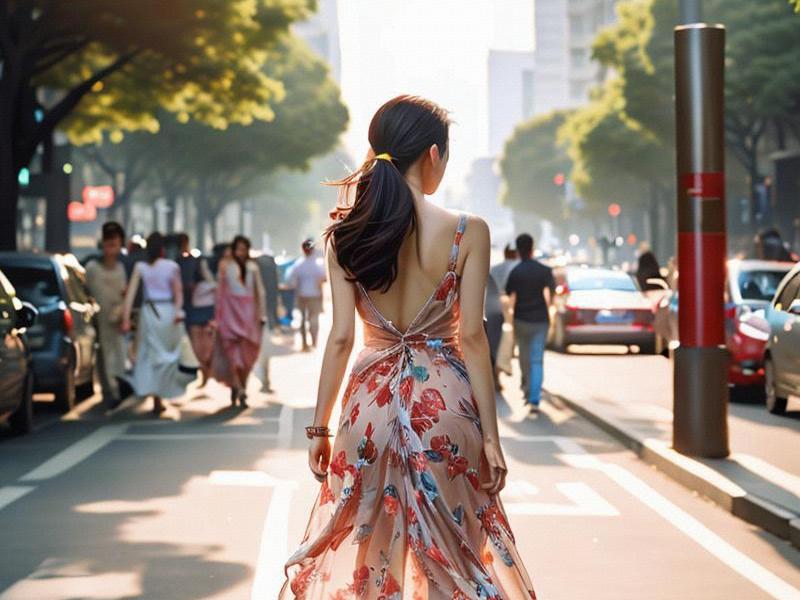This article delves into the unique beauty of Shanghai, exploring how this vibrant city seamlessly blends its rich historical and cultural heritage with cutting-edge modernity. From its iconic skyline to its ancient alleys, Shanghai is a testament to the harmonious coexistence of the old and the new.

Shanghai, often referred to as the "Pearl of the Orient," is a city that has long captivated the world with its unique blend of tradition and modernity. Nestled along the banks of the Huangpu River, this bustling metropolis is a microcosm of China's rapid urbanization and its commitment to preserving its cultural heritage.
The beauty of Shanghai lies not only in its stunning skyline, which features some of the world's tallest buildings, but also in its rich history and vibrant culture. The city's transformation from a small fishing village to a global financial hub is a story of resilience, innovation, and a deep respect for its past.
One of the most striking aspects of Shanghai's beauty is its architectural diversity. Walking through the city, one can witness the juxtaposition of colonial-era buildings, such as the famous Bund, with modern skyscrapers like the Shanghai Tower and the Jin Mao Tower. The Bund, with its neoclassical architecture, offers a glimpse into the city's colonial past, while the Pudong district showcases Shanghai's ambitious vision for the future.
The Bund, or Waitan, is a must-visit destination for anyone seeking to understand Shanghai's historical significance. This waterfront promenade, lined with 52 buildings of various architectural styles, was once the financial hub of old Shanghai. Today, it serves as a symbol of the city's transformation and its ability to blend the old with the new. At night, the Bund is illuminated, creating a magical atmosphere that reflects off the Huangpu River, making it a photographer's paradise.
上海贵族宝贝龙凤楼
Pudong, on the other hand, is a testament to Shanghai's modernity. Home to the iconic Oriental Pearl Tower, the Shanghai World Financial Center, and the Shanghai Tower, this district is a hub of business, finance, and innovation. The Shanghai Tower, standing at 632 meters, is the tallest building in China and the second-tallest in the world. Its unique twisting design and advanced engineering make it a marvel of modern architecture.
Beyond its architecture, Shanghai's beauty is also evident in its cultural offerings. The city is a melting pot of cultures, with influences from China, Europe, and beyond. This cultural fusion is reflected in its cuisine, art, and festivals. Shanghai cuisine, known for its sweet and savory flavors, is a highlight for food lovers. Dishes like Xiaolongbao (soup dumplings) and Shengjianbao (pan-fried dumplings) are must-tries for anyone visiting the city.
Shanghai's art scene is equally vibrant. The city is home to numerous galleries, museums, and cultural institutions, such as the Shanghai Museum, the Power Station of Art, and the M50 Creative Park. These venues showcase a wide range of artistic expressions, from traditional Chinese art to contemporary installations. The M50 Creative Park, located in the former M50 textile factory, has become a haven for artists and art enthusiasts, featuring over 100 galleries and studios.
上海花千坊龙凤
Festivals in Shanghai add another layer of beauty to the city. The Shanghai International Film Festival, one of the oldest and most prestigious film festivals in Asia, attracts filmmakers and cinephiles from around the world. The Shanghai Fashion Week is another major event that highlights the city's status as a global fashion capital. These festivals not only celebrate the city's cultural diversity but also contribute to its reputation as a vibrant and dynamic metropolis.
Shanghai's commitment to preserving its cultural heritage is evident in its efforts to protect and restore historical sites. The Yu Garden, a classical Chinese garden built in the Ming Dynasty, is a prime example of this dedication. This beautifully landscaped garden, with its intricate pavilions, ponds, and rockeries, offers a glimpse into the traditional Chinese aesthetic. Another notable site is the Old Town, or Yuyuan Bazaar, which features narrow streets, traditional shops, and historic buildings.
The city's urban development projects also reflect its commitment to sustainability and environmental conservation. The Shanghai Greenway Network, a system of parks, green spaces, and bike paths, aims to improve the quality of life for its residents while promoting eco-friendly transportation. The city has also implemented various initiatives to reduce pollution and enhance air quality, demonstrating its dedication to creating a sustainable future.
爱上海419论坛
Shanghai's beauty is not just confined to its physical landscape but also extends to its people. The city is known for its warm and welcoming residents, who embody the spirit of the city. Whether it's a friendly conversation with a local or the sight of people enjoying a peaceful moment in one of the city's parks, the human element adds a unique charm to Shanghai.
The city's educational and technological advancements further contribute to its allure. Shanghai is home to some of the best universities in China, attracting students and scholars from around the world. Its role as a global technology hub is evident in the presence of major tech companies and innovation centers. This blend of education and technology ensures that Shanghai remains at the forefront of global developments.
In conclusion, Shanghai's beauty is a harmonious blend of its rich historical and cultural heritage with its modern urban development. From its iconic architecture to its vibrant culture, the city offers a unique experience that captivates visitors and residents alike. Shanghai's ability to preserve its past while embracing the future is a testament to its resilience and innovation. As the city continues to grow and evolve, its beauty will undoubtedly remain a source of inspiration and admiration for generations to come.